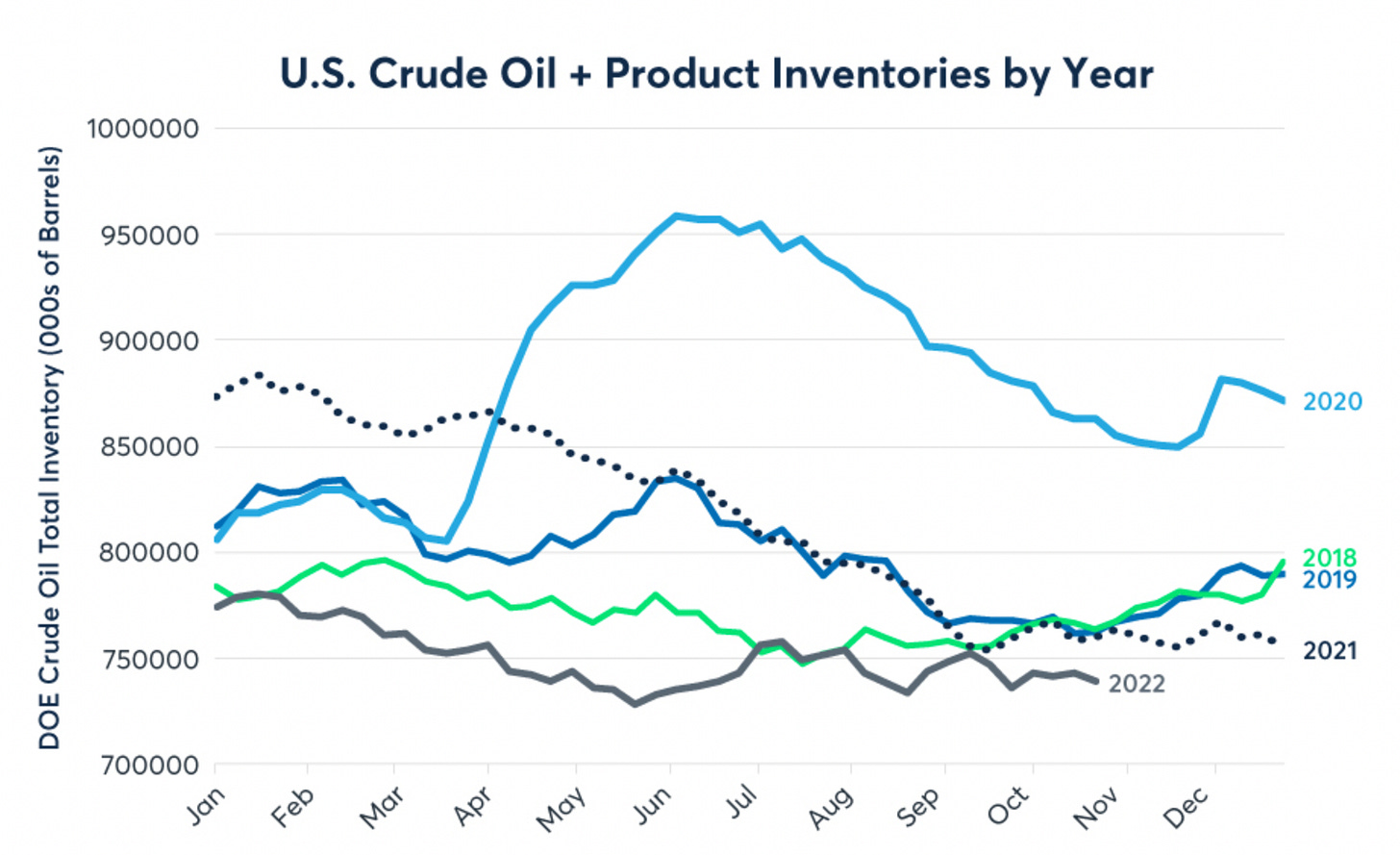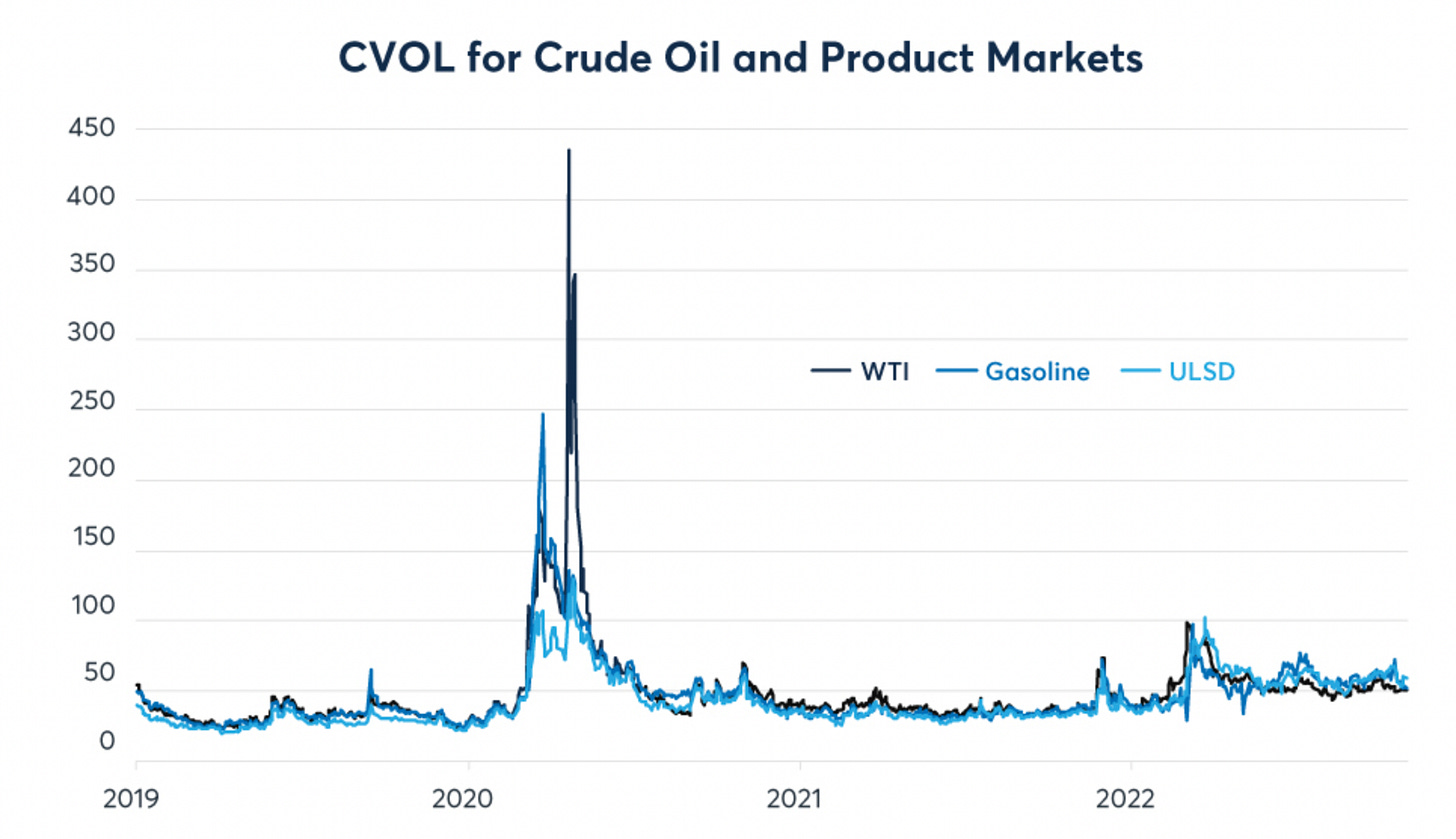Oil Market Update
Volatility persists
Oil markets are broadly affected by supply and demand factors, owing to their physical and tangible nature. Dramatic swings in both supply and demand have left oil prices at a crossroads, and we are here to break down the key factors which have led oil markets to be so volatile.
The main reasons can be summarised as follows:
Low US crude oil inventories for this time of the year
OPEC+ production cuts
US buyback for Strategic Petroleum Reserve
Fall in demand from China
Continued uncertainty across commodity markets
1. Low US Oil Inventories
Comparing against previous years, current US crude oil inventories are lower than historically seen:
This has been a combination of supply pressures on Europe, and production cuts seen with OPEC+. The pressure on the US to fill-in the shortage has depleted reserves more than expected.
Concerns of supply headwinds have taken a hit to investor confidence, as fears over supply shortages mount.
2. OPEC+ Production Cuts
Speaking of the OPEC+ production cuts, we have seen this in ‘OPEC+’.
The surprise cut to production of 2 million barrels a day on 5 October 2022 stressed supply shortages further and led to price rises of WTI Crude and Brent Crude, as expected with lower supply increasing prices.
3. Strategic Petroleum Reserve
The US Strategic Petroleum Reserve is an emergency stockpile of petroleum, maintained by the US Department of Energy. It has up till 2020 remained relatively steady, with no need to use emergency stockpiles. However, since 2020 there has been a significant drawdown in the Reserve with the largest decline seen in 2022.
Declining almost a third of its pre-pandemic level, the Reserves were used to increase supply in the face of dwindling supplies to Europe and the global implications of the Russia-Ukraine crisis. Following the crisis, Joe Biden announced a 180 million barrel drawdown from the reserve; unprecedented levels.
The depletion in the Reserve was used as a tool by the US to keep oil prices low, as supplying more oil through the reserve would increase global supply and so reduce prices.
On 16 December 2022, an announcement was made that the US is looking to rebuild its Strategic Petroleum Reserves back up, replenishing the stockpile. This is in response to oil prices reaching lows of around $74 suggesting the need for direct price controls is less and can be eased. The move also comes to encourage domestic production of crude oil, giving producers assurance of demand.
Currently, it is set to buy 3 million barrels with deliveries due in February. It effectively puts a floor on US oil prices.
4. Demand from China
China's slowing economy is a severe concern for the demand-side of the oil market. Oil imports by China in September 2022 were down 2% YoY, and growth in China has been severely hindered due to its Zero-Covid policies. Recent surges in cases in China only raise these concerns.
Most commodities are denominated in USD and an appreciation of the Greenback tends to take a hit on commodity prices. The recent appreciation in the Dollar may be an explanation for diminishing demand, as import costs increase for oil-importing countries.
Recent signs of dollar depreciation may be a signal for a reversal of this trend we have seen, however these are just early signs as of now, and we still expect rate hikes by the FED to continue into 2023.
5. Uncertainty
Rising uncertainty over commodity markets in general can be seen with the CVOL index:
Here we seen implied volatility levels pre-pandemic were around 25%, but they have increased to around 50% in 2022. The increasing concerns are reflected with roughly 2x as much uncertainty as before.
The WTI futures curve also remain in backwardation, a situation when future prices of an underlying are less than the spot prices of the asset. This is suggestive of concerns of falling oil prices in the next couple years, which is counter-intuitive to the production cuts seen. This suggests rather than supply shortages, the bigger concern in the short-term is low demand, which is depressing prices. Concerns over recessionary periods and declining economic activity is likely driving this.




